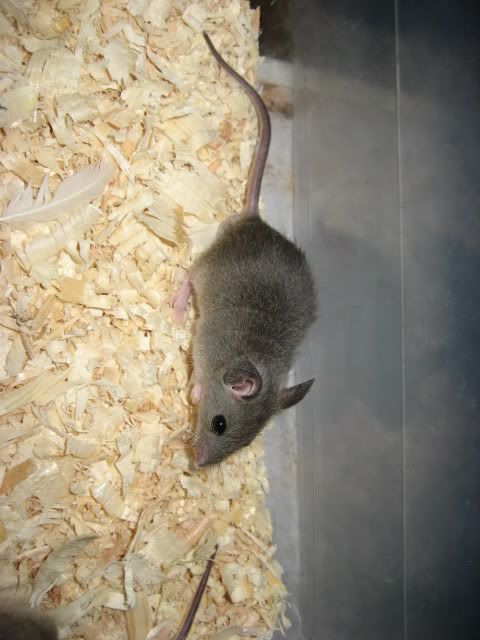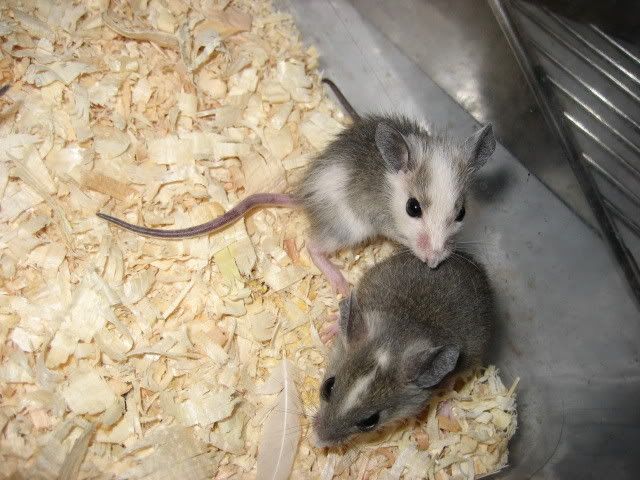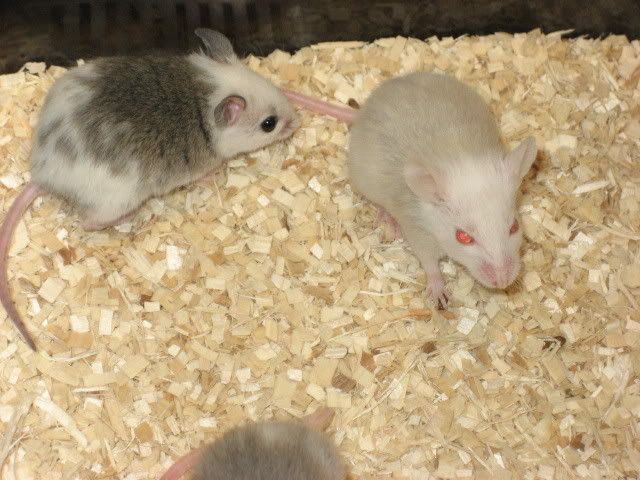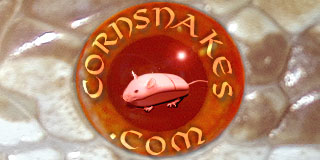-
Hello!
Either you have not registered on this site yet, or you are registered but have not logged in. In either case, you will not be able to use the full functionality of this site until you have registered, and then logged in after your registration has been approved.
Registration is FREE, so please register so you can participate instead of remaining a lurker....
Please be certain that the location field is correctly filled out when you register. All registrations that appear to be bogus will be rejected. Which means that if your location field does NOT match the actual location of your registration IP address, then your registration will be rejected.
Sorry about the strictness of this requirement, but it is necessary to block spammers and scammers at the door as much as possible.
You are using an out of date browser. It may not display this or other websites correctly.
You should upgrade or use an alternative browser.
You should upgrade or use an alternative browser.
My African Soft-furred rats...
- Thread starter Velvet
- Start date
HanneysCorn
Canadian Cornaholic
So I set up ALL of the female weaned soft furs in one of my big 2' x 4' rat cages. Plus I put in 3 males. I didn't count the females...
...They are not old enough to breed yet, but it won't be long. At first, I will just leave them together. Maybe put some nest boxes in. I don't think I will be able to remove pregnant females to a different place though - I don't have the time and space for that. I will just thin down the numbers if they don't do well in this setup.
Kathy, I don't remove the pregnant females and have had no problem at all with cannabilism or fighting when the babies arrive. These guys seem to love big colonies and do well. There isn't that dominant alpha male attitude that you see in mice colonies. Both my off shoot colony and the original colony have at least 8 or more adults living together. There are at least 2 males in each colony.
Yup, up here in Canada these are becoming very popular as feeders for balls, especially the finicky ones and folks are having lots of success. Some feared using them would 'imprint' on the balls and they would accept nothing else, but that has been proven not to be the case from what I've been reading.
My corns have taken to them readily in most cases. Those that would switch between mouse and rat already, gobbled the ASF's. Most of my corns who would turn their noses up at a rat offering, took the ASF's immediately without hesitation; there are still a few holdouts tho.
I have one 3 year old female who looks like a yearling in size. She has been my worst nightmare as far as getting her to eat mouse or rat on a consistent basis, thus her very small size. She refuses anything larger than a mouse fuzzie or rat pinky, thus I've had to offer her 2, 3, 4 fuzzies when she would eat. Usually I have to leave her mice or rat offerings overnight and remove that which she has deemed not essential in the morning. She wolfed her first ASF offering as a fuzzie right off the tongs. I'm hoping to now see a growth spurt happening with her...she's been shedding on a monthly basis as her size is increasing with her now regular feeds on ASF's. I'm watching a success story right before my eyes in this particular case. Sure some would say she's now imprinted for ASF's but my days of worries and concerns over her feeding habits are now gone.
Just my experiences working with these ASF's as feeders. I'm totally happy with the results I'm seeing. I wish you as much luck as I have had. So far I haven't seen a reduction in production of the ASF's litters due to heat. Of course our ambient temperatures are not as warm as yours yet, but it is above 80 degrees in the snake room where the ASF's are being housed for now.
ASFs get my vote as the best thing since sliced bread...
Ruth
kathylove
Pragmatic & Logical
We used aluminum, but the ammonia starting rotting it right away. So we had galvinized steel inserts made - should have made the whole thing out of that. It has lasted great for the past year - shows no sign of deterioration yet.
Bill made a hinged top of a wooden frame with a wire mesh middle. And there is a feed trough built into the top. The water is a dog "Lixit" installed outside the cage, with a little mini cage that they can stick their heads into to drink. There is a funnel underneath to catch the excess water and drain it outside the building. I will try to get Bill to photo it.
I don't know how the ASF will take to the Lixit yet. I gave them some soft liquid food last night after setting them up. I will stick a bowl of water in the cage until I see them using it. The regular rats start using the Lixit before they are completely weaned, so it is no trouble for something the size of an almost weaned rat.
I won't know for a while if this is a good set up for ASF, but it works great for regular rats.
Bill made a hinged top of a wooden frame with a wire mesh middle. And there is a feed trough built into the top. The water is a dog "Lixit" installed outside the cage, with a little mini cage that they can stick their heads into to drink. There is a funnel underneath to catch the excess water and drain it outside the building. I will try to get Bill to photo it.
I don't know how the ASF will take to the Lixit yet. I gave them some soft liquid food last night after setting them up. I will stick a bowl of water in the cage until I see them using it. The regular rats start using the Lixit before they are completely weaned, so it is no trouble for something the size of an almost weaned rat.
I won't know for a while if this is a good set up for ASF, but it works great for regular rats.
wmdude102086
Cory
I almost thought they did look too cool to feed off but I am sure one good bite from them and it would get me right back on track lol.Very Cool Meg...
They're too cute to feed off......... NOT!!
LOL
I almost thought they did look too cool to feed off but I am sure one good bite from them and it would get me right back on track lol.
Just wait until, completely unprovoked, one of them leaps to the top of a 15 gal tank and sinks its teeth deep into your finger and won't let go.
wmdude102086
Cory
Yeaa that would really move him up the feeding lineJust wait until, completely unprovoked, one of them leaps to the top of a 15 gal tank and sinks its teeth deep into your finger and won't let go.
Tortoiseguy
New member
I have been breeding these guys for around a year or so now. I first started keeping them in groups of 1.2 or 1.3 in ten gallon tanks. This worked great and I had tons of babies. Had about 10 colonies going. One problem I have had is that these guys love to chew. They were eating the water bottles. I tried a few things to get around that. Then I purchased a rat rack from someone. This rack consisted of plastic concrete mixing tubs that are 18"x24" I believe or something like that. The tubs slide out of the rack and tops are 1/2" x 1/2" mesh. It came with an automatic watering system which didn't work for the soft furreds as they couldn't reach the spouts. So I just used water bottles laid on the tops of the mesh with the nozzels down through the mesh. Well, for some reason my production pretty much dropped off to nothing for several weeks. Not sure what caused this. Things have picked up a little, but no where near the numbers that I was getting in the tanks.
I have sold off several of these guys to people with ball pythons that were reluctant feeders. On two occasions there were ball pythons that hadn't eaten in excess of 6 month. Both fed within seconds on the soft furreds. Most of my snakes will eat them, but a few are holding out on me. I will continue to breed them and need to pick up some new stock. Fortunately for me, there are several people in Illinois breeding them and the price is now reasonable. Just wanted to ad my two cents. Good luck all.
Take care,
Jeff Port
I have sold off several of these guys to people with ball pythons that were reluctant feeders. On two occasions there were ball pythons that hadn't eaten in excess of 6 month. Both fed within seconds on the soft furreds. Most of my snakes will eat them, but a few are holding out on me. I will continue to breed them and need to pick up some new stock. Fortunately for me, there are several people in Illinois breeding them and the price is now reasonable. Just wanted to ad my two cents. Good luck all.
Take care,
Jeff Port
Tortoiseguy
New member
I forgot to mention the issue of biting that was brought up. I have only been bitten on two occasions. Once was after I initially got my group. A female protecting her babies grabbed on and held on. It hurt like heck and bled for a while too. The other bite was by a young one that I had picked up to transfer to a different cage. More of a surprise bite. I have had hundreds of these guys with just the two occurences. Have quite a few color combinations with them...some with red eyes. They are interesting creatures. Like I said, I will continue to work with them as I like them, even with the setback I have had.
Take care,
Jeff Port
Take care,
Jeff Port
wmdude102086
Cory
When I first got my snake at a reptile/bird show in Harmarville outside of Pittsburgh a guy had dozens of them but at the time I had no idea what they were. I dont need em. Dont have Ball Pythons and my snake dosent even eat a full sized mouse yet. But they interest me to no end for some reason!I have found a guy about 300 miles from here that has them. I'm going to go that way in a couple of weeks and am planning to buy some from him. Hope I love them. Hope my snakes love them. Hope they love me. Can you feel the love in here?
Since you mentioned genetics...
There are 2 colors and a pink eye dilute gene, which results in 2 more colors, diluted versions of the 2 original colors. 2 main colors are black and sort of a cinnamon brown. Add dilute gene to these and you get 2 shades of beige
Though many call it albino, there is no known albino gene for ASF rats. It's a pink-eye or red-eye dilute and not a true albino. Seems to be a simple recessive
There is also the marking gene which works the same as the rat hooded gene, its co-dominant. Wild type is solid colored. Heterozygous form is mostly solid with sort of a masked face or striped face. Homozygous form is also called "pied", seems to be the most common. white head, shoulders, underside, flanks and tail area, colored in the middle back and abdomen.
So 4 colors and 3 marking types result in about 12 basic variations. I have produced every variation since Ive started, currently most of my stock is solid or heterozygous "masked" type, mostly black. I try to keep the heterozygous ones as breeders so they produce all 3 types in any litter.
I wish somebody would figure out the "evil hell-bitch" gene sp we could breed it out of them.
.
There are 2 colors and a pink eye dilute gene, which results in 2 more colors, diluted versions of the 2 original colors. 2 main colors are black and sort of a cinnamon brown. Add dilute gene to these and you get 2 shades of beige
Though many call it albino, there is no known albino gene for ASF rats. It's a pink-eye or red-eye dilute and not a true albino. Seems to be a simple recessive
There is also the marking gene which works the same as the rat hooded gene, its co-dominant. Wild type is solid colored. Heterozygous form is mostly solid with sort of a masked face or striped face. Homozygous form is also called "pied", seems to be the most common. white head, shoulders, underside, flanks and tail area, colored in the middle back and abdomen.
So 4 colors and 3 marking types result in about 12 basic variations. I have produced every variation since Ive started, currently most of my stock is solid or heterozygous "masked" type, mostly black. I try to keep the heterozygous ones as breeders so they produce all 3 types in any litter.
I wish somebody would figure out the "evil hell-bitch" gene sp we could breed it out of them.
.
SnakeCreations
Ophiolatress
Hey All,
Thought I'd throw in my 2 cents here. I've been watching the info on these cute rats and so finally purchased some. I put my daughter in charge of keeping them tame and she loves em.
Well, I have my first clutch of corns about 4 weeks ago, all but one took the first 4 feeds - there was one that refused every time. I put an ASF pinky in with her last night and she ate!! I was anxious because the ASF pinky was 3 grams, but the wee bugger chomped it! I couldn't be more pleased.
Wade, we're probably getting them from the same guy
Enjoy!
-Tonya
Thought I'd throw in my 2 cents here. I've been watching the info on these cute rats and so finally purchased some. I put my daughter in charge of keeping them tame and she loves em.
Well, I have my first clutch of corns about 4 weeks ago, all but one took the first 4 feeds - there was one that refused every time. I put an ASF pinky in with her last night and she ate!! I was anxious because the ASF pinky was 3 grams, but the wee bugger chomped it! I couldn't be more pleased.
Wade, we're probably getting them from the same guy
Enjoy!
-Tonya
What I called black I think is actually agouti. They seem to have the multi-colored hairs which get more apparent as they get older. I believe, like rats, agouti is dominant as these days it seems to be the only color showing up any more.
I took these shots of some juveniles. The adults are too nasty to try to get decent pics. =) Plus these were convenient as it's CO2 time. They're about adult mouse size.
First the solid colored. He looks like a regular mouse.

Pied and stripe-head/masked types

All 3 together

The pied ASF rats being produced by my colonies have MUCH less white than they used to. The masked type as well, most of mine only have a small white stripe on their forehead.
Here's an old (01/07) pic with a pied red-eye dilute.

I took these shots of some juveniles. The adults are too nasty to try to get decent pics. =) Plus these were convenient as it's CO2 time. They're about adult mouse size.
First the solid colored. He looks like a regular mouse.

Pied and stripe-head/masked types

All 3 together

The pied ASF rats being produced by my colonies have MUCH less white than they used to. The masked type as well, most of mine only have a small white stripe on their forehead.
Here's an old (01/07) pic with a pied red-eye dilute.

wade
Save The Humans
Wade, we're probably getting them from the same guy
Enjoy!
-Tonya
Tonya, glad to hear your's sound tame. I'm looking forward to it.
Kathy, glad to help.
To anyone interested, there is a forum dedicated to ASF rats.
http://www.asfrats.info/
It's not nearly as busy as this forum but its a good source to find local breeders and specific discussion about asf rats.
Another interesting pic, if you can make it out, explains why they are also called "multimammate mice".

To anyone interested, there is a forum dedicated to ASF rats.
http://www.asfrats.info/
It's not nearly as busy as this forum but its a good source to find local breeders and specific discussion about asf rats.
Another interesting pic, if you can make it out, explains why they are also called "multimammate mice".

kathylove
Pragmatic & Logical
I have just noticed something the past week or so...
since I set up the large colony and the male "grow tank". In both of those larger tubs, the rats seem to be using a communal "toilet" in one corner of the cage. I did not see that in the smaller kitty litter tubs I used for the trios. I don't know when the babies will become "potty trained" (there are no babies in those large tubs yet). But if this continues, I can scoop out the dirty spots as frequently as needed, and cut down on the number of complete cleanings. I like that! Have others noticed that?
I just adjusted the exhaust fan to go almost all night. I am hoping that the extra air at night, when it is somewhat cooler, may stimulate more breeding with all of my rodents.
since I set up the large colony and the male "grow tank". In both of those larger tubs, the rats seem to be using a communal "toilet" in one corner of the cage. I did not see that in the smaller kitty litter tubs I used for the trios. I don't know when the babies will become "potty trained" (there are no babies in those large tubs yet). But if this continues, I can scoop out the dirty spots as frequently as needed, and cut down on the number of complete cleanings. I like that! Have others noticed that?
I just adjusted the exhaust fan to go almost all night. I am hoping that the extra air at night, when it is somewhat cooler, may stimulate more breeding with all of my rodents.
Kathy like you I did not know this either but it explains much. I read on the ASF forum about it and now what mine have been doing makes sense. I have mine in a critter trail 3 since I only had 1 breeding pair. Even in that they were using a potty area. Makes cleaning a breeze. Now that I am in the process of increasing my little family I am glad they do it.
Tamara
1 abli corn, 1 black rat and 1 BRB
breeding ASF for feeding
Tamara
1 abli corn, 1 black rat and 1 BRB
breeding ASF for feeding
